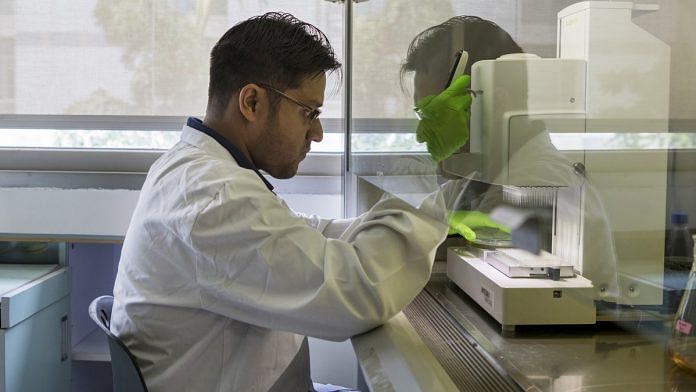There is not yet an ironclad scientific consensus on exactly how the coronavirus that causes Covid-19 is spreading, but experts are getting a pretty good sense of it. That understanding needs to be central to our strategy of combatting the virus with minimal collateral damage.
This isn’t about over-reaction or under-reaction, but mis-reaction. For example, sending janitors rushing into closed schools and other buildings to sanitize them poses much more risk to those janitors — and anyone they later come in contact with — than leaving the buildings empty.
And if you leave your apartment building to go running, there’s more danger in your shared elevator than in the great outdoors.
Such distinctions are important. There’s abundant evidence that we are going to be contending with this thing not for days or weeks, but for months.
“Shelter in place” directives are more suited to short-term emergencies like terror attacks than ongoing pandemics. It just isn’t possible to tell people to stay in their homes for months. Many people will need to leave their homes to deliver medical care, buy food and take away trash.
As we settle in for the long haul, science-based public messaging should separate high-risk activities from those that are low risk or minimal risk. It’s essential that policies don’t restrict important kinds of work that pose almost no risk, or ignore risky activities that have fallen through the cracks.
These conclusions are based on what we know about how this virus spreads: people infected with the virus can expel infectious viral particles when they sneeze or cough, and also when they speak. Scientists have estimated that humans incubate the coronavirus for an average of five days but sometimes up two weeks before they have noticeable symptoms. There’s evidence, recently published in Science, that pre-symptomatic people or those with mild symptoms are driving much of the spread.
But there’s also a lot we don’t know. We don’t know whether some people, especially children, have completely silent infections. And there’s still uncertainty about the size of the particles that carry the virus.
Also read: Remdesivir trials in Israel and Italy’s drop in cases — 5 global developments on Covid-19
Viruses are just strips of genetic material surrounded by some proteins; they can travel on their own but more likely ride on different-sized droplets of fluid. Larger droplets settle faster and are more likely to spread the disease by close contact, especially direct contact such as shaking hands or touching common surfaces. Smaller aerosol particles can hang in the air longer, where others can inhale them. Smaller still are airborne particles — viruses not attached to any water and therefore capable of hanging in the air for hours. Measles and chicken pox spread this way, which is why they are so notoriously contagious.
While aerosol spread of Covid-19 would be terrifying, several researchers I contacted over the weekend said data we have so far suggest it’s unlikely — droplets seem to be the primary form of contagion. However, when I talked to Columbia University’s Jeffrey Shaman, who studies how the environment affects infectious diseases, he said we don’t yet know what kinds of particles are being shed — droplets, aerosol or airborne. Penn’s Harvey Rubin, who studies complex biomolecular systems, says these categories are likely to blend together — the virus may ride mostly on droplets, but there still may be a few that float around on smaller aerosol particles or even lighter airborne ones.
So if there’s currently no evidence for airborne transmission, but it can’t be ruled out, should we assume it happens? It’s important to remember that a person has to encounter a certain critical mass of virus to get infected. That means even if a few particles are transmitted through the air, they may not be driving the disease in the real world.
A study recently published in the New England Journal of Medicine about viruses surviving for months on surfaces has to be viewed in the same probabilistic light. Scientists could detect small amounts of virus on plastic and stainless steel several days after they were deposited there. But Purdue University virologist David Sanders says this shouldn’t be taken to mean that a surface touched three days ago is as dangerous as one an infected person just touched. The quantity of virus decreases in an approximately exponential fashion, which is why it might not be rational or humane to send janitors into just-closed buildings.
One part of the science that’s been missed in the messaging concerns enclosed spaces — such as apartment building elevators. However, if there’s one place you might inhale lingering particles, it would be in an elevator of a crowded apartment building. Hence it might be better to take the stairs, if you can — they’d offer the young and able-bodied some much-needed exercise and decrease the risk in taking the elevator for older or disabled residents.
If some smaller particles do hang in the air, they would be dispersed and diluted almost instantly outdoors. That’s why most of the experts I spoke with said that despite stay-at-home orders, they were walking, running or biking. That’s not a trade-off between public health and personal good, because you’re not putting yourself or others at risk unless you get near other people.
We need to keep our eyes on the activities mostly likely to spread this virus. As The Washington Post reported on a CNN town hall program, even Tony Fauci warns against obsessing over a single viral particle that might cling to a cardboard package: “I think if you start thinking about money and mail and things like that, you can almost sort of immobilize yourself, which I don’t think is a good idea.”
There’s a lot we still don’t know about Covid-19. But we can do a better job of using the facts we have to shape our response to it.
Also read: Coronavirus: Latest updates on cases in India, all you need to know about COVID-19






